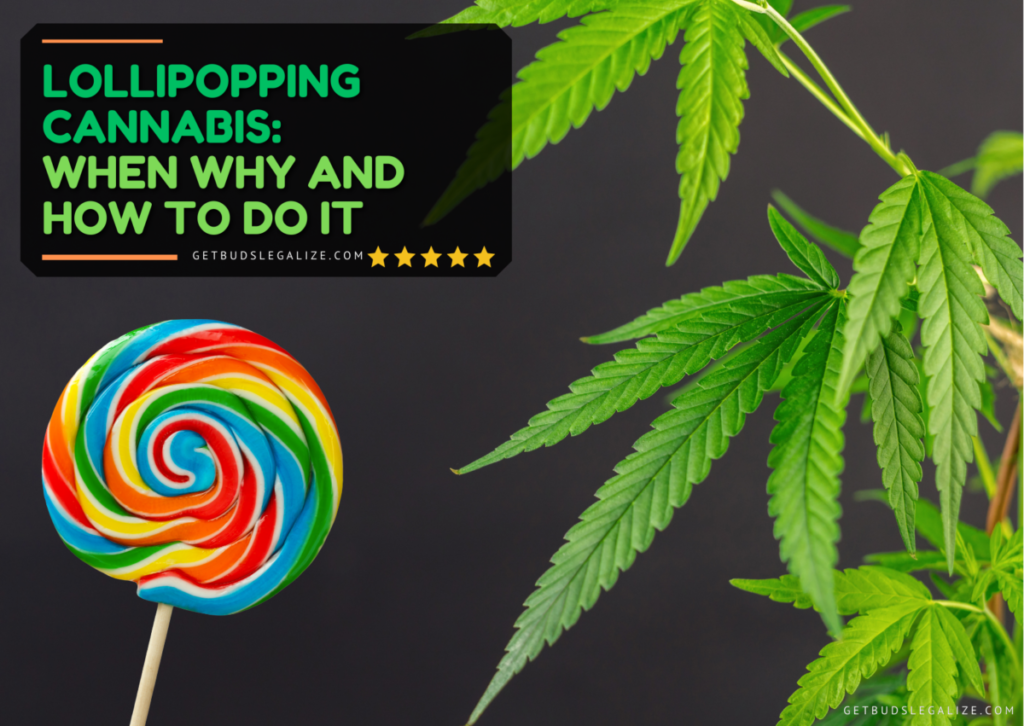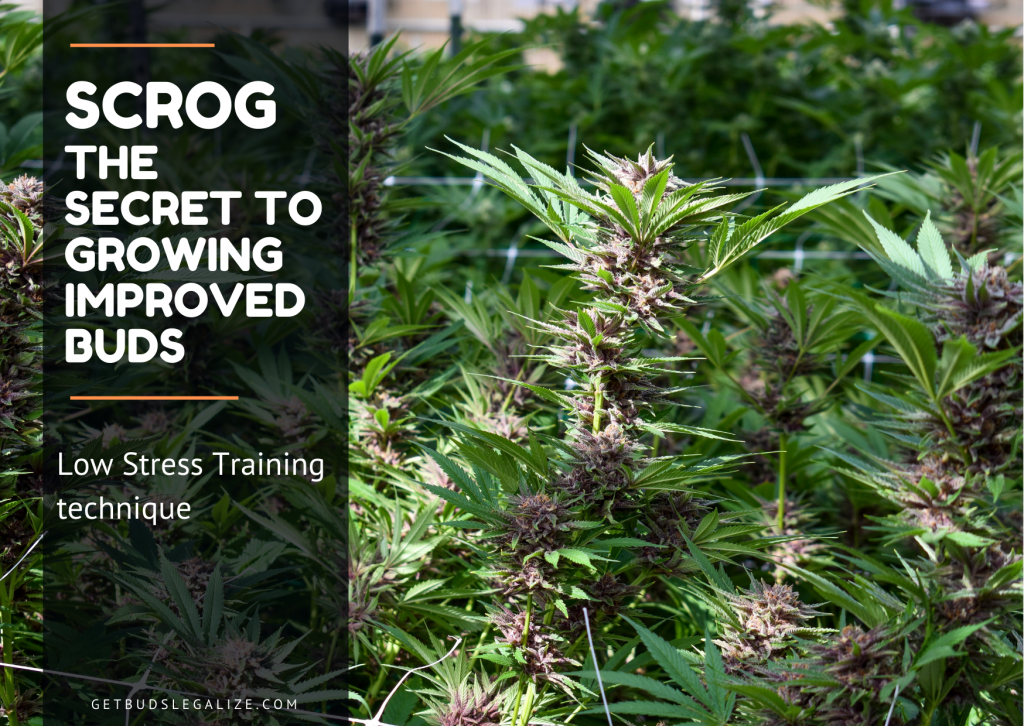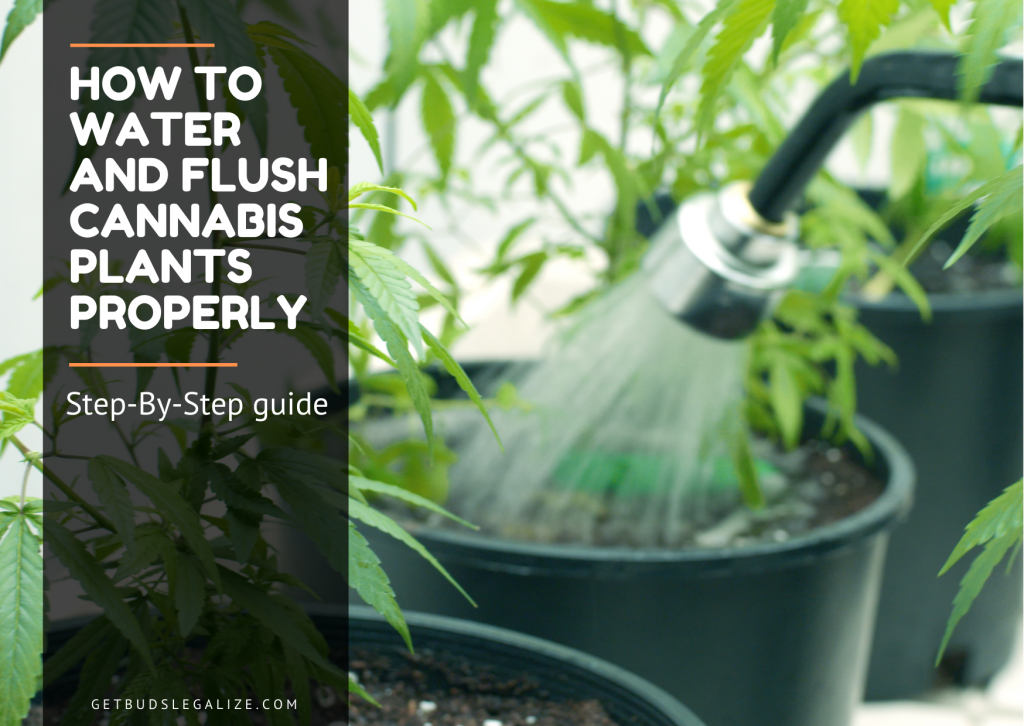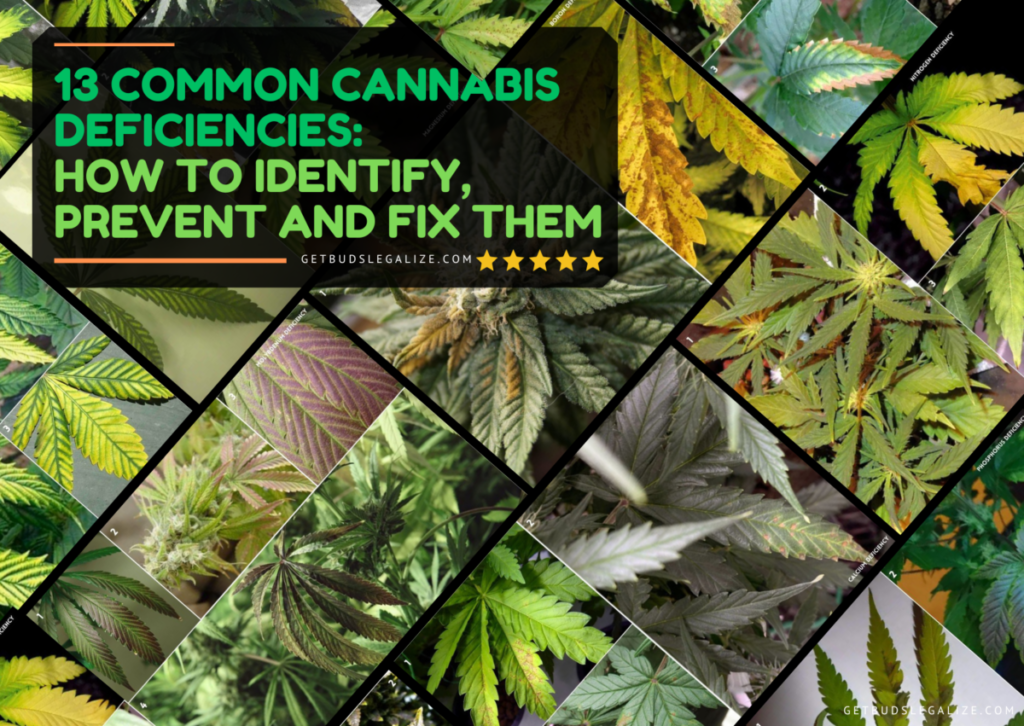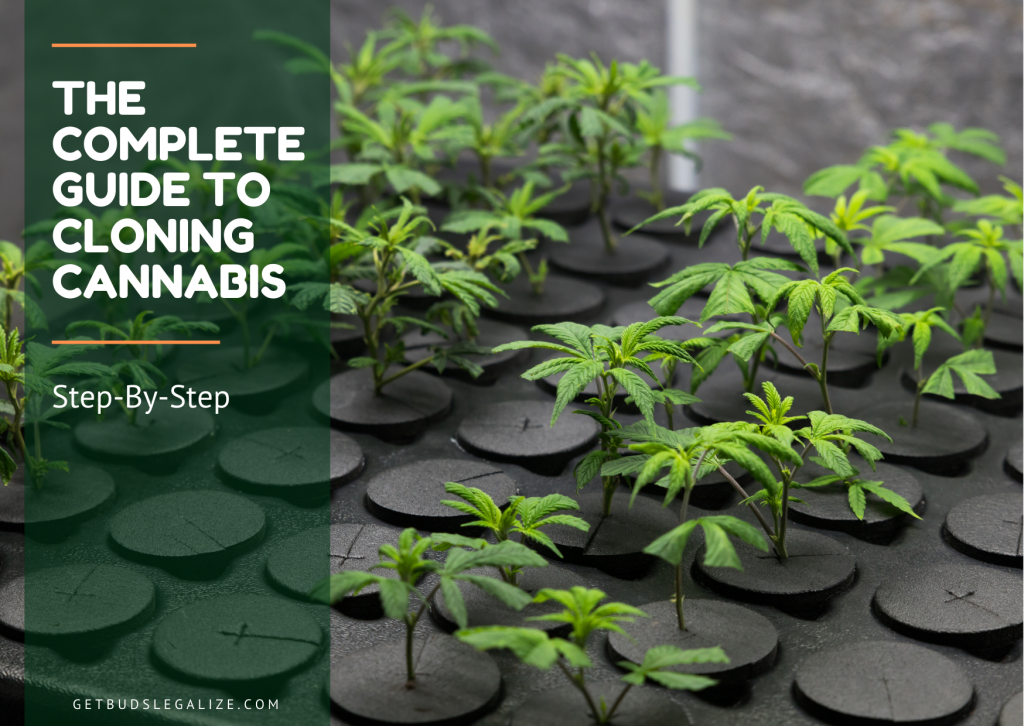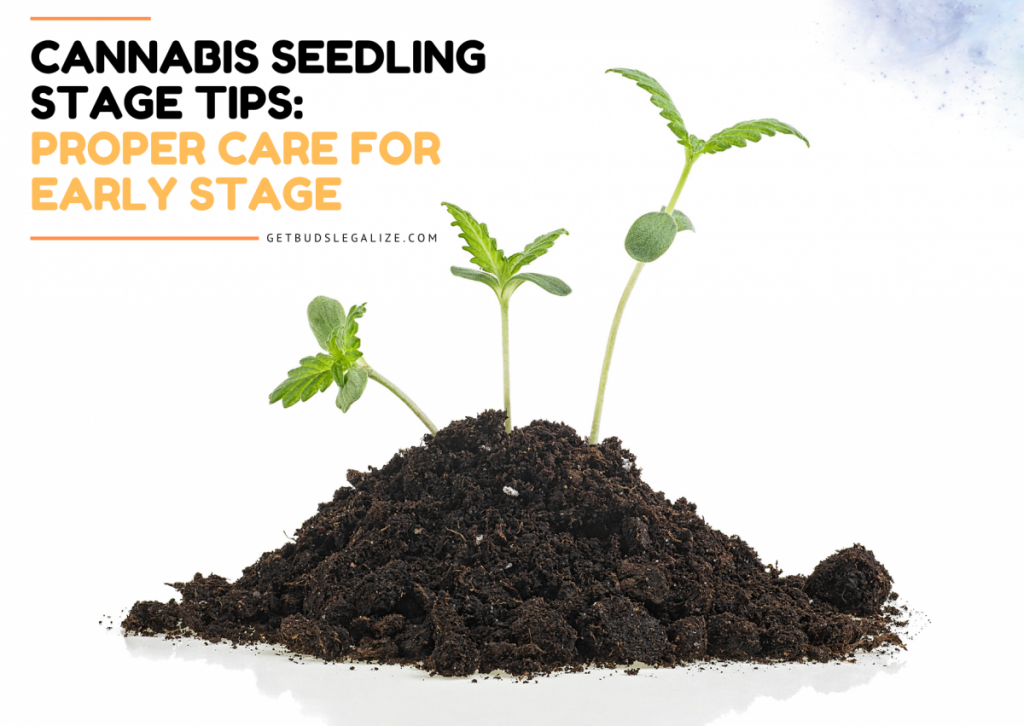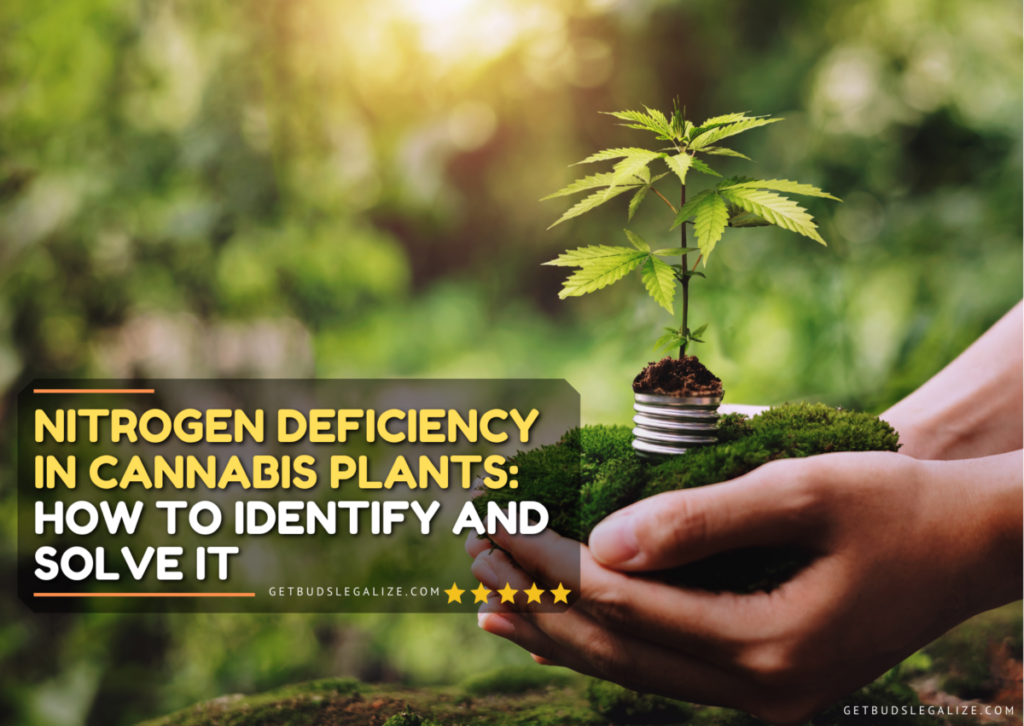Lollipopping Cannabis: When Why and How to Do It
If you are growing cannabis and you are looking for a simple and effective way to increase the quality and quantity of your harvest, you might want to try lollipopping. Lollipopping is a pruning technique that involves removing the lower branches and leaves of your plants, leaving only the top buds that receive the most light. This way, you can direct more energy and nutrients to the main colas, resulting in bigger, denser, and more potent buds.
Why Should You Lollipop Your Plants?
Lollipopping cannabis has several benefits, some of them are:
- It improves the airflow and light penetration in your grow room, which reduces the risk of mold, pests, and diseases.
- It makes your plants easier to manage and maintain, as you don’t have to deal with unnecessary foliage.
- It increases the potency and quality of your buds, as they receive more light and nutrients.
- It boosts your yield, as you avoid wasting energy on popcorn buds that are small and airy.
When Should You Lollipop?
The best time to lollipop your plants depend on the strain and the growth stage. Generally, you want to do it a couple of weeks before they enter flowering when your plants stop stretching and start developing buds. This usually happens around week 3 or 4 of the vegetative stage for photoperiod strains, or week 2 or 3 for autoflowering strains. You can also lollipop your plants during the first week of flowering but avoid doing it later as it can stress the plants and affect their bud development.
How Often Should You Lollipop?

You only need to lollipop your plants once per grow cycle. Lollipping is not a maintenance technique like defoliation or trimming; it’s a one-time intervention that prepares your plants for the stage of flowering.
However, you might want to do some light pruning or defoliation throughout the growth cycle to keep your plants healthy and tidy. Just make sure you don’t overdo it and always leave enough time for your plants to recover before switching to flowering.
How Much Should You Lollipop?
There is no definitive answer to how much you should do it. It depends on several factors, such as the size and shape of your plant, the type and intensity of your lights, and your personal preference.
A general rule of thumb is to remove about 20-30% of the lower growth on each branch. You want to leave enough foliage for photosynthesis, but not so much that it blocks light from reaching the upper buds.
You can use a simple method to determine how much to lollipop: hold your hand above the canopy and look at the shadow it casts on the lower branches. If you can see a clear outline of your hand, that means there is enough light penetration and you don’t need to lollipop more. If you can’t see your hand at all, that means there is too much shade and you need to lollipop more.
Some growers prefer to be more aggressive and remove up to 50% or more of the lower growth. This can result in bigger and denser colas at the top, but it can also reduce the overall yield and increase the stress on your plants. Experiment with different amounts of lollipopping to see what works best for you and your setup.
How to Lollipop Your Cannabis Plants: Step-by-Step Guide (2 Methods)
There are two main techniques for lollipopping marijuana plants: top-down and bottom-up. Both techniques involve removing the lower branches and leaves of your plants, but they differ in how much foliage you leave on the top.
• Technique 1 • Top Down Lollipopping

Top-down lollipopping is a more aggressive technique that involves removing almost all of the foliage from your plants, leaving only a few leaves on the top buds. This technique is suitable for growers who want to maximize their yield per plant and have enough space and light for their plants.
To perform top-down lollipopping, you will need:
- A pair of pruning shears or scissors
- A container or trash bag for the trimmed material
- Gloves (optional but recommended)
Follow these steps:
1. Choose the right time to lollipop your plant. The best time is during the vegetative stage before the plant starts flowering. You can also lollipop during the early flowering, but avoid doing it after the third week, as this can stress the plant and reduce its yield.
2. Start from the top of the plant and work your way down. Cut off any branches that are too thin, weak, or shaded by the canopy. Leave only the main branches that have healthy and vigorous growth.
3. On each branch, remove the lower nodes and leaves that are not receiving enough light. You can use your scissors or your fingers to pinch them off. Leave only the top few nodes on each branch, where the buds will form.
4. Dispose of the trimmed material properly. You can compost it, use it for making hash or edibles, or throw it away. Do not leave it near your plants, as it can attract pests and diseases.
5. Monitor your plants after lollipopping. You may notice some signs of stress, such as drooping leaves or yellowing tips. This is normal to happen, however, it should decrease in a few days. You can also apply some water or nutrients to help your plants recover.
6. Enjoy the benefits of lollipopping. You should see an improvement in your plants’ health, growth, and yield. Your buds will be bigger, denser, and more potent, and you will have less risk of mold and pests.
• Technique 2 • Bottom Up Lollipopping

Bottom-up lollipopping is a more conservative technique that involves removing only some of the foliage from your plants, leaving more leaves on the top buds. This technique is suitable for growers who want to preserve some of the natural shape and structure of their plants and have limited space and light for their plants.
To perform bottom-up lollipopping, you will need:
- A pair of sharp scissors or pruning shears
- A container or trash bag for the cuttings
- Gloves (optional but recommended)
Follow these steps:
1. Choose the right time to lollipop your plants. The best time is during the vegetative stage before the plants start flowering. You can also do it in the early flowering, but avoid doing it too late as it can stress your plants and reduce their yield.
2. Start from the bottom of the plant and work your way up. Cut off any branches and leaves that are below the main canopy or that are not receiving enough light. You can also remove any weak or damaged branches that are unlikely to produce good buds.
3. Be careful not to overdo it. You don’t want to remove more than 20% of the plant’s foliage at once, as this can shock your plants and slow down their growth. Aim for a balanced and even canopy that allows light to reach all the buds.
4. Dispose of the cuttings properly. You can compost them, use them for mulch, or throw them away. Do not leave them near your plants as they can attract pests and diseases.
5. Monitor your plants after lollipopping. You may notice some signs of stress such as wilting or yellowing, but they should recover quickly. You can also give them some extra water and nutrients to help them heal and grow.
Lollipopping vs Defoliation: What Are the Differences?
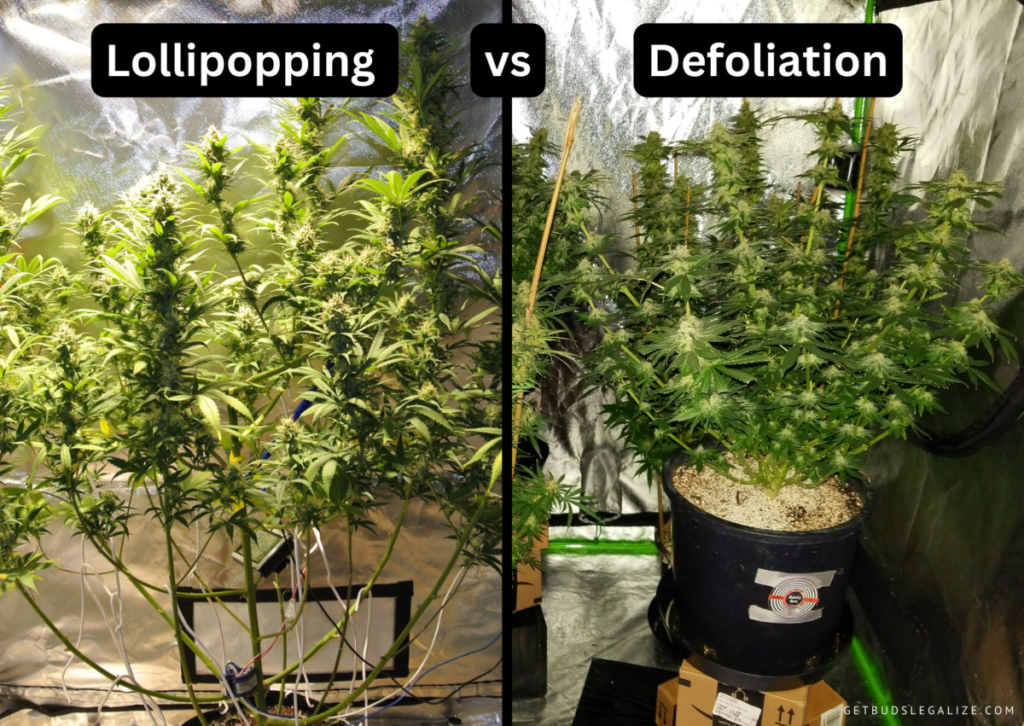
Lollipopping and defoliation are two pruning techniques that are often confused with each other. However, they have some key differences that you should know before applying them to your cannabis plants.
The main difference between lollipopping and defoliation is that lollipopping is done once or twice during the life cycle of your plants, while defoliation is done multiple times.
Lollipopping is a technique that involves removing the lower branches and leaves of your plants, leaving only the top buds that receive the most light. The main purpose of lollipopping is to increase the yield and quality of your harvest by directing more energy and nutrients to the main colas.
Defoliation is a technique that involves removing some of the leaves from your plants throughout their life cycle, especially during flowering. The main purpose of defoliation is to improve airflow and light penetration by reducing overcrowding and shading among your plants.
Can I Combine Lollipopping With Other Training Techniques?
Lollipopping cannabis is a powerful technique that can boost your yields significantly. However, it is not a magic solution that works by itself. You should combine lollipopping with other growing techniques to optimize your results. Some of these techniques are:
• Topping:
Topping is a technique that involves cutting off the tip of the main stem of your plant during the vegetative stage. This way, you can create multiple main colas instead of one single cola.
• Low Stress Training (LST):
LST is a technique that involves bending and tying down the branches of your plant during the vegetative stage. This way, you can create a more even canopy and expose more buds to light.
• Screen Of Green (SCROG):
SCROG is a technique that involves placing a horizontal net or screen above your plants during the vegetative stage. This way, you can train your plants to grow through the holes in the screen and create a flat canopy.
• Sea Of Green (SOG):
SOG is a technique that involves growing many small cannabis plants in close proximity during a short vegetative stage. This way, you can fill up your growing space quickly and efficiently.
Final Thoughts
Lollipopping cannabis is an easy and effective way to improve the yields and quality of your buds. By following this guide, you can learn how to perform this technique correctly and safely on your plants. So what are you waiting for? Start lollipopping today!
FAQs about Lollipopping Cannabis
The term “lollipopping” comes from the idea of making your cannabis plant look like a lollipop, with a bare stem and a round top full of buds. By cutting off the lower growth, you can create more airflow and light penetration in your grow space, which can prevent mold and pests, and improve bud development. Lollipopping is a type of high-stress training (HST), which means it involves wounding your plant intentionally to trigger a stress response that makes it grow stronger and more resilient.
There is no definitive answer to this question, as it depends on the strain, the size of the plant, and the growing conditions. However, a general rule of thumb is to leave at least 3 to 4 nodes on each branch, or about 30% to 40% of the plant’s height. This will ensure that the plant has enough foliage to support its growth and photosynthesis.
Yes, you can, but you have to be careful not to stress them too much. Autoflowering plants have a limited vegetative period and will start flowering automatically after a few weeks. Therefore, you should only lollipop them once, preferably before they start showing signs of flowering. You should also avoid removing too much growth, as they have less time to recover from pruning.
Yes, you can in the early stage, but you have to be more selective and gentle. Lollipopping in flowering stage can help improve the airflow and light penetration to the buds, as well as prevent mold and pests. However, you should only remove the lower branches and the fan leaves that are clearly shaded or dying. You should also avoid cutting any buds or pistils, as this can reduce your yield and potency.
Lollipopping too much can be harmful to the plant, as it can stress it and reduce its overall yield. The amount of lollipopping depends on the strain, the environment, and the grower’s preference, but a general rule is to remove no more than 20-30% of the plant’s foliage. Lollipopping should be done gradually and carefully, and only during the vegetative or early flowering.
Lollipopping can potentially increase your yield by directing more energy and resources to the upper buds, which are usually bigger and denser than the lower ones. It can also improve the quality of your buds by enhancing their resin production and aroma. However, lollipopping alone is not enough to guarantee bigger yields. You also need to provide your plants with optimal lighting, nutrients, water, and ventilation.
Lollipopping is not considered a low stress training (LST) technique, as it involves cutting off parts of the plant. LST techniques are those that manipulate the shape and structure of the plant without cutting or damaging it, such as bending, tying, topping, or supercropping. LST techniques are usually preferred over high-stress techniques like lollipopping, as they cause less shock and trauma to the plant.
You should not lollipop your marijuana plants after the first week of flowering, as this can cause more harm than good. Lollipopping too late can shock the plants and stunt their growth, reducing their yield and quality. It can also expose the buds to more light and heat, which can cause them to dry out and lose their flavor and aroma. Additionally, it can increase the chances of hermaphroditism, which is when a female plant develops male pollen sacs and pollinates itself or other plants, resulting in seeds.

